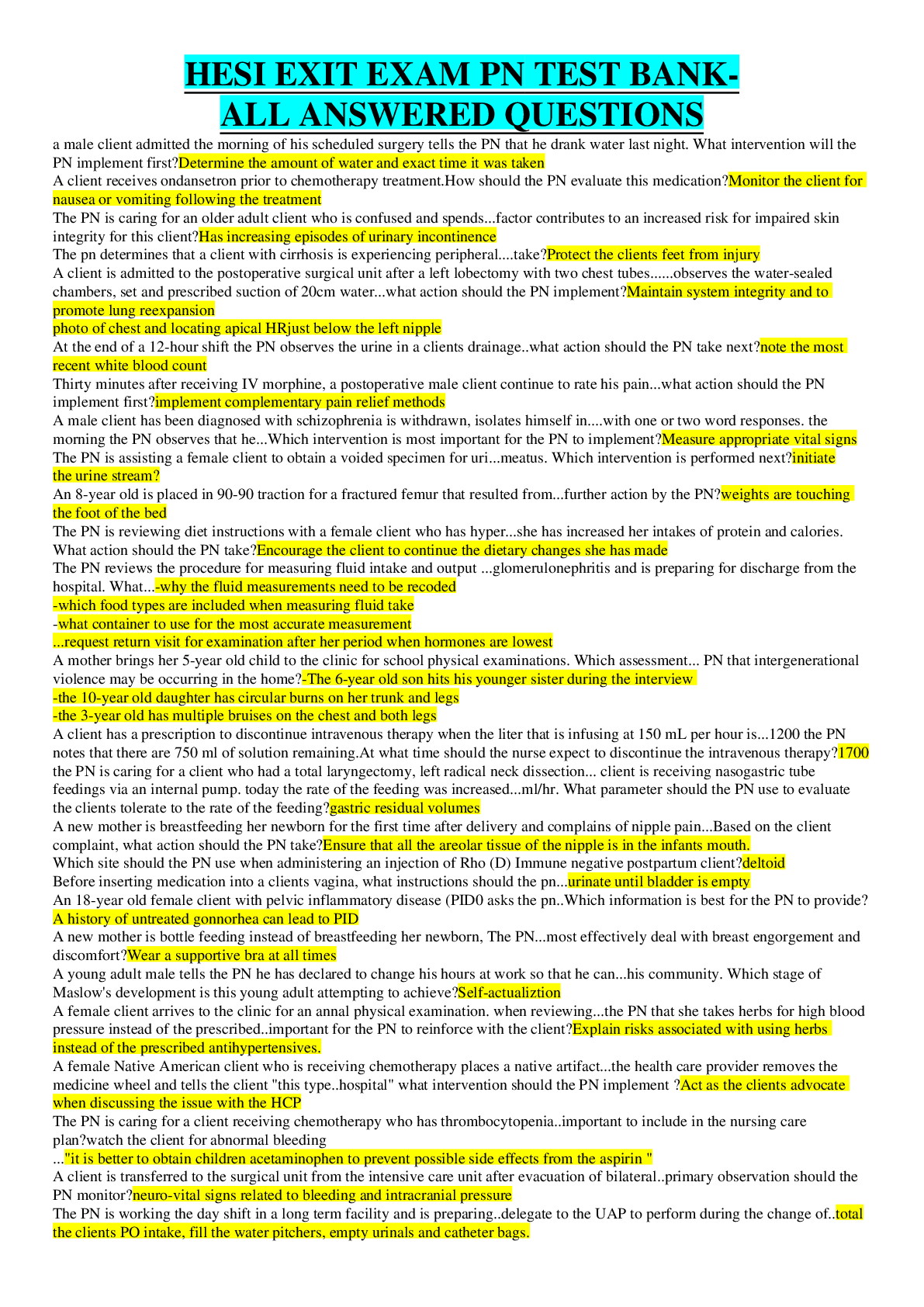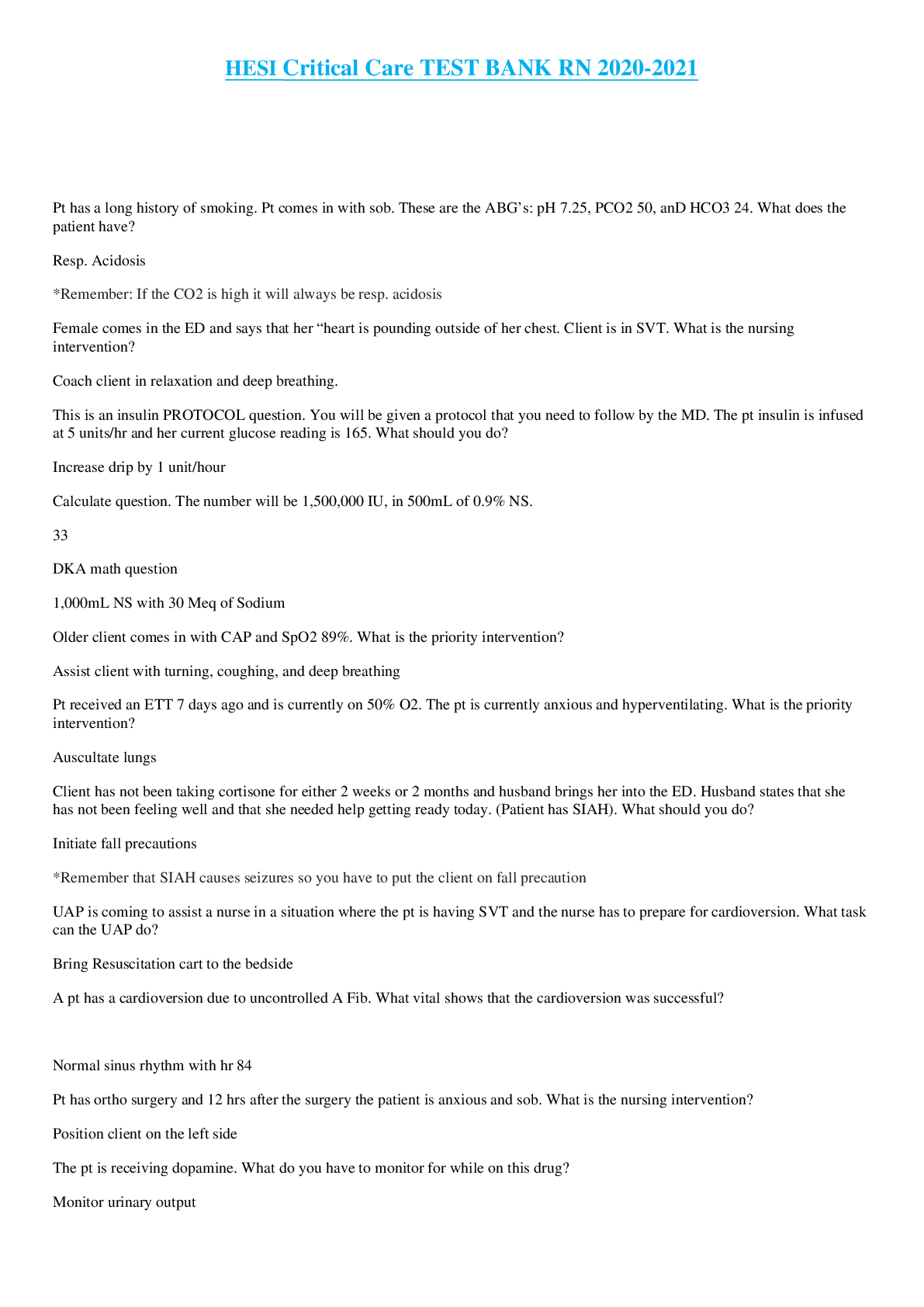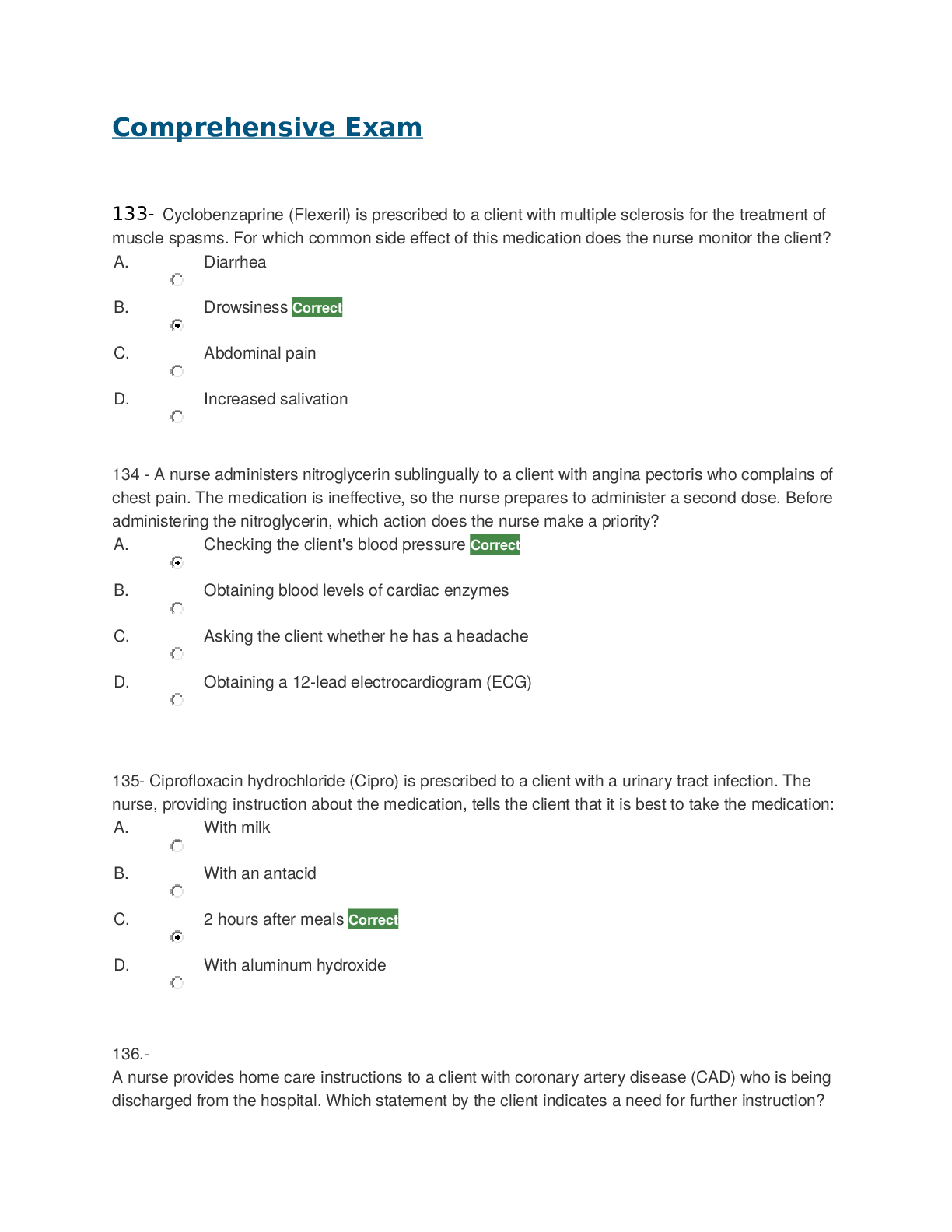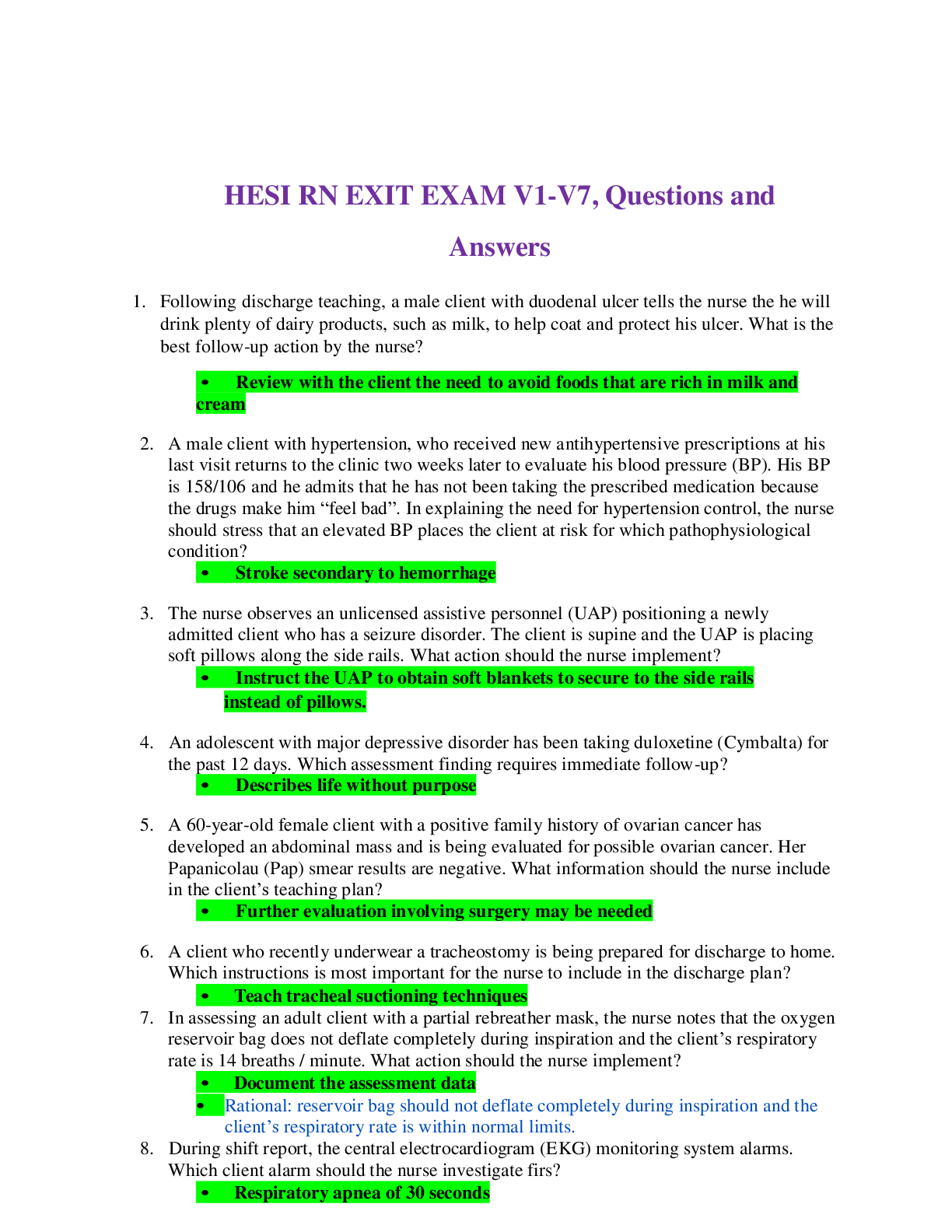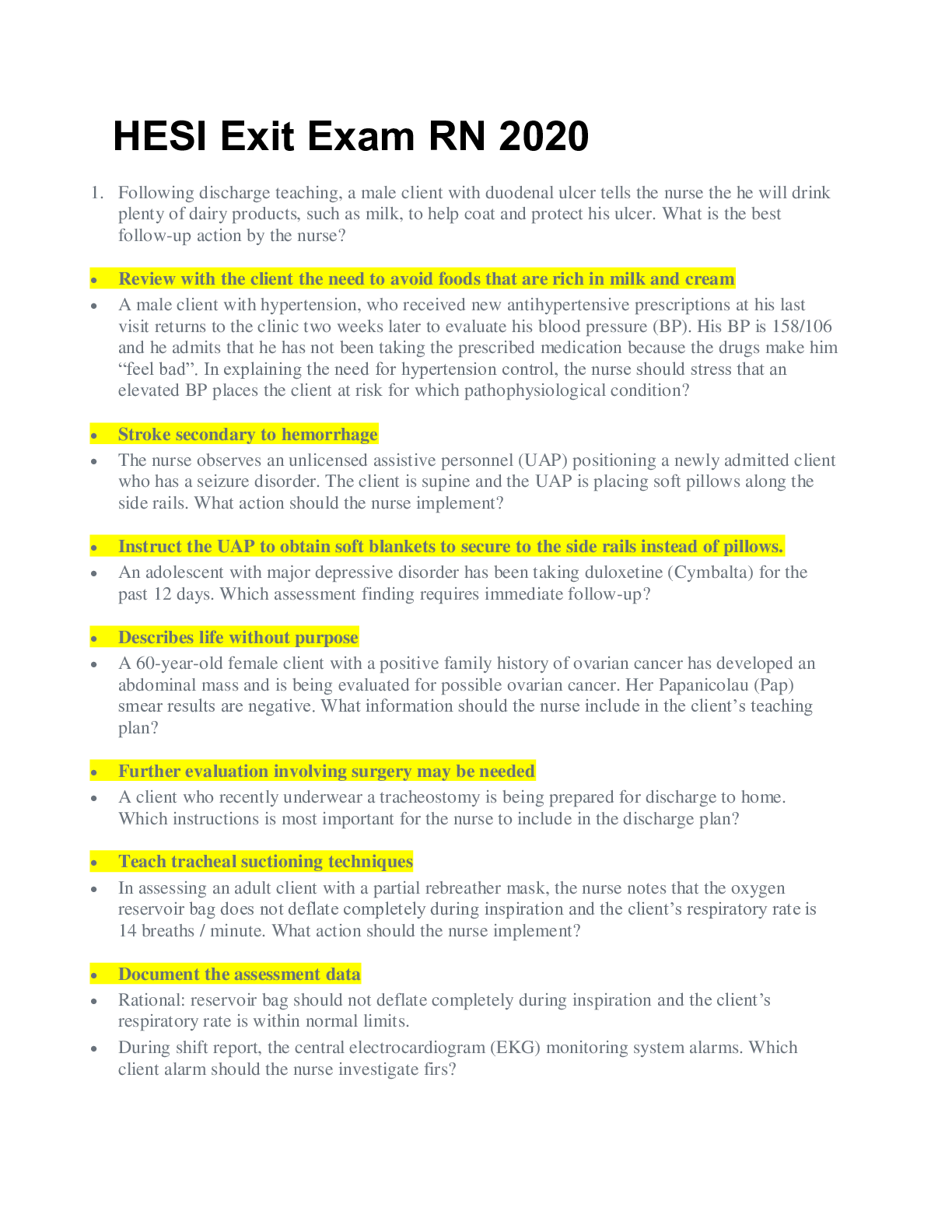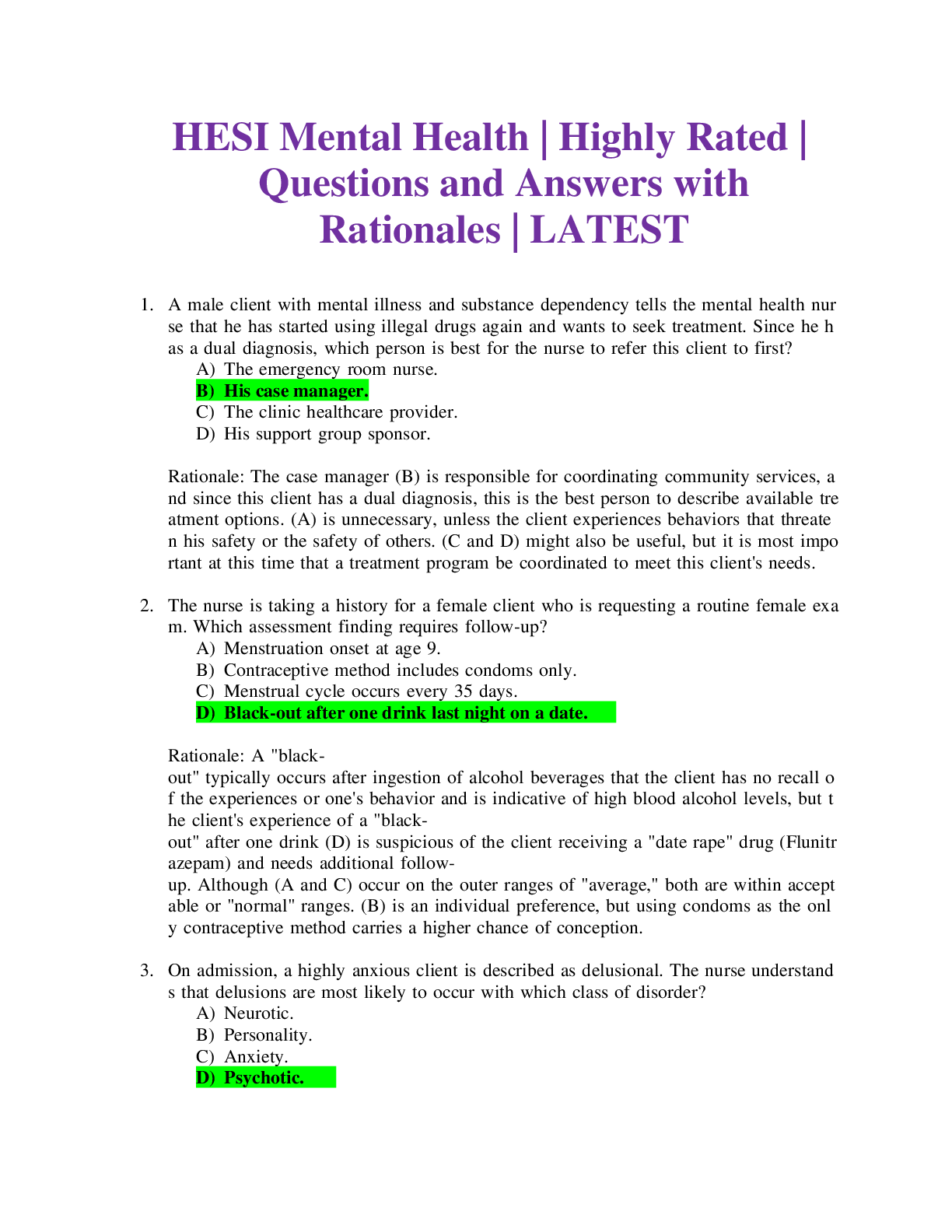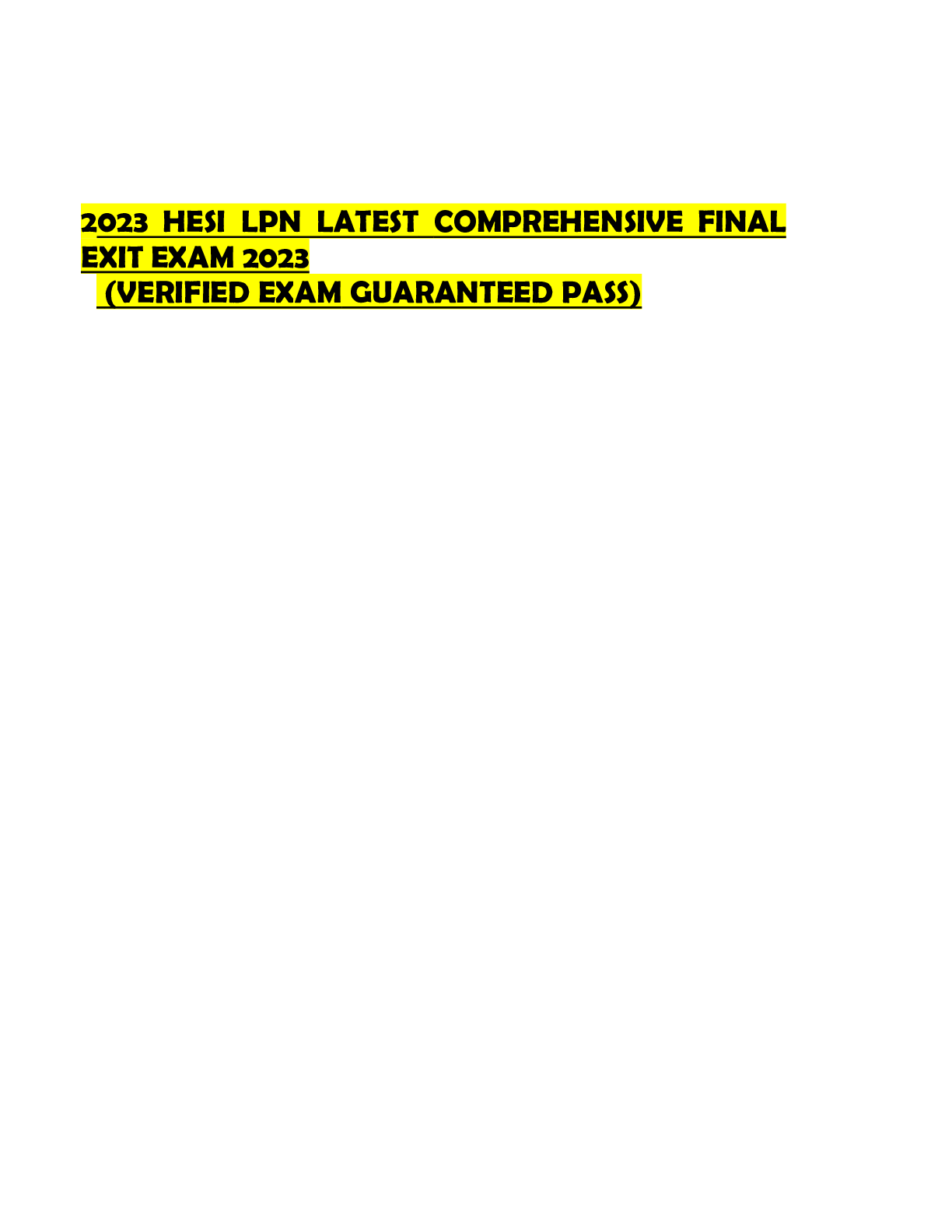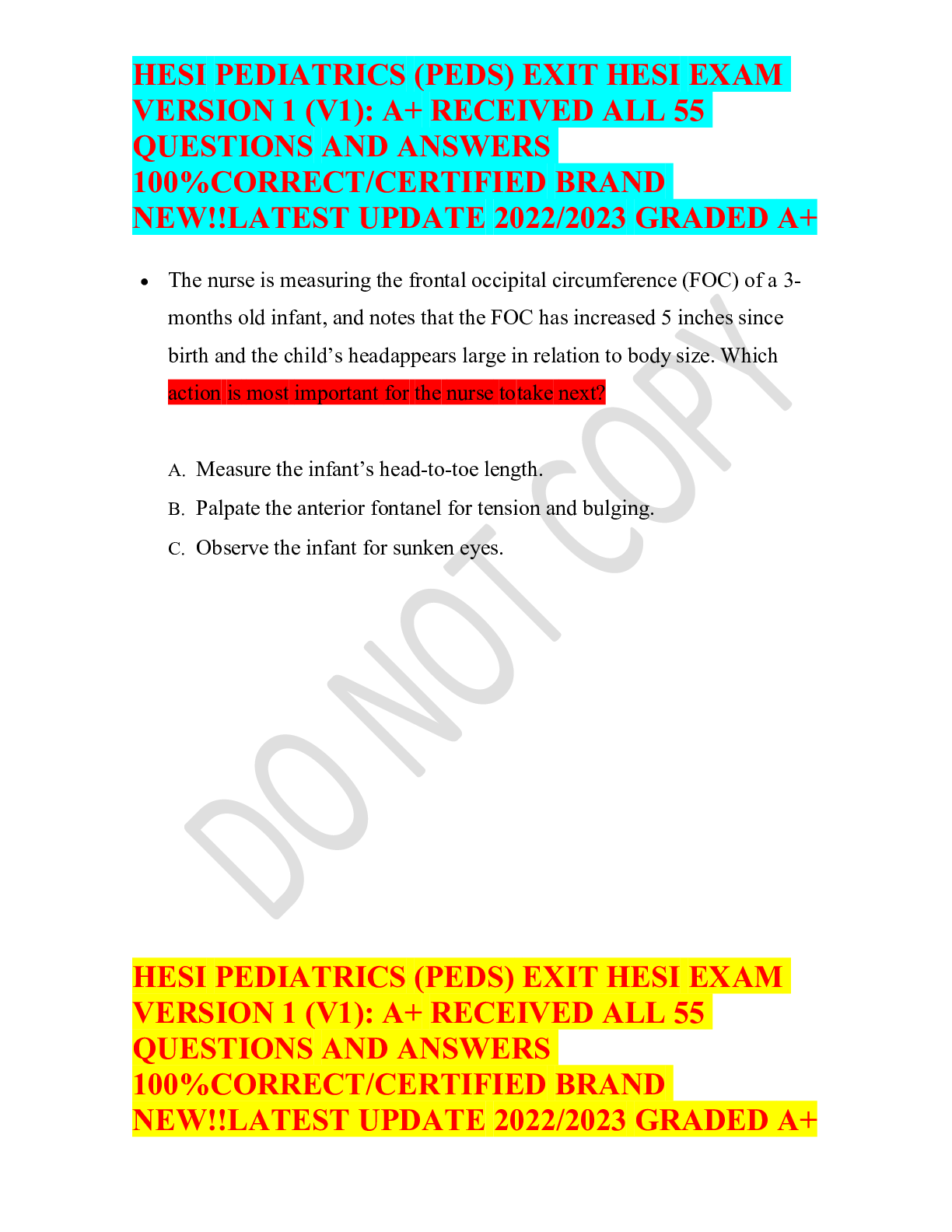HESI EXIT EXAM MODULE 10 WITH RATIONALE
Document Content and Description Below
HESI EXIT EXAM MODULE 10 WITH RATIONALE. Questions 1. ID: 8482493994 A nurse is assigned to care for four clients on the medical-surgical unit. Which client should the nurse see first on the s... hift assessment? A A client admitted with pneumonia with a fever of 100° F and some diaphoresis B A client with congestive heart failure with clear lung sounds on the previous shift C A client with new-onset of shortness of breath (SOB) and a history of pulmonary edema Correct D A client undergoing long-term corticosteroid therapy with mild bruising on the anterior surfaces of the arms Rationale: The client who should be seen first is the one with SOB and a history of pulmonary edema. In light of such a history, SOB could indicate that fluid-volume overload has once again developed. The client with a fever and who is diaphoretic is at risk for insufficient fluid volume as a result of loss of fluid through the skin, but this client is not the priority. Test-Taking Strategy: Use the process of elimination and focus on the subject of the question, the client who should be seen first. Recall the rule of assessment of the ABCs — airway, breathing, and circulation — which means that the client experiencing SOB should take precedence over the other clients on the unit. This client’s condition could progress to respiratory arrest if the client were not assessed immediately on the basis of the signs and symptoms. Read each option and think about the client in most critical condition and review the disorders to determine which clients have the most critical needs. If you had difficulty with this question, review the various disease processes presented in this question. Reference: Ignatavicius, D., & Workman, M. (2010). Medical-surgical nursing: Patient-centered collaborative care. (6th ed., p. 176). St. Louis: Saunders. Level of Cognitive Ability: Analyzing Client Needs: Physiological Integrity Integrated Process: Nursing Process/Assessment Content Area: Delegating/Prioritizing Awarded 1.0 points out of 1.0 possible points. 2. ID: 8482500733 A client with gastroenteritis who has been vomiting and has diarrhea is admitted to the hospital with a diagnosis of dehydration. For which clinical manifestations that correlate with this fluid imbalance would the nurse assess the client? Select all that apply. A Decreased pulse B Decreased urine output Correct C Increased blood pressure D Increased respiratory rate Correct E Decreased respiratory depth Rationale: A client with dehydration has an increased depth and rate of respirations. The diminished fluid volume is perceived by the body as a decreased oxygen level (hypoxia), and increased respiration is an attempt to maintain oxygen delivery. Other assessment findings in insufficient fluid volume are decreased urine volume, increased pulse, weight loss, poor skin turgor, dry mucous membranes, concentrated urine with increased specific gravity, increased hematocrit, and altered level of consciousness. Increased blood pressure, decreased pulse, and increased urine output occur with fluid-volume overload. Test-Taking Strategy: Use the process of elimination and focus on the subject, dehydration (deficient fluid volume). Think about the pathophysiology of deficient fluid volume. Remember that the body will increase the respiratory rate in an attempt to maintain the oxygen level. If you had difficulty with this question, review the signs of insufficient fluid volume. Reference: Ignatavicius, D., & Workman, M. (2010). Medical-surgical nursing: Patient-centered collaborative care (6th ed., p. 179). St. Louis: Saunders. Level of Cognitive Ability: Analyzing Client Needs: Physiological Integrity Integrated Process: Nursing Process/Assessment Content Area: Fluid and Electrolytes Awarded 2.0 points out of 2.0 possible points. 3. ID: 8482497531 A nurse is reviewing the medical records of the clients to whom she is assigned on the 7 am–7 pm shift. Which client will the nurse monitor most closely for excessive fluid volume? A A 48-year-old client receiving diuretics to treat hypertension B A 35-year old client [Show More]
Last updated: 1 year ago
Preview 1 out of 11 pages
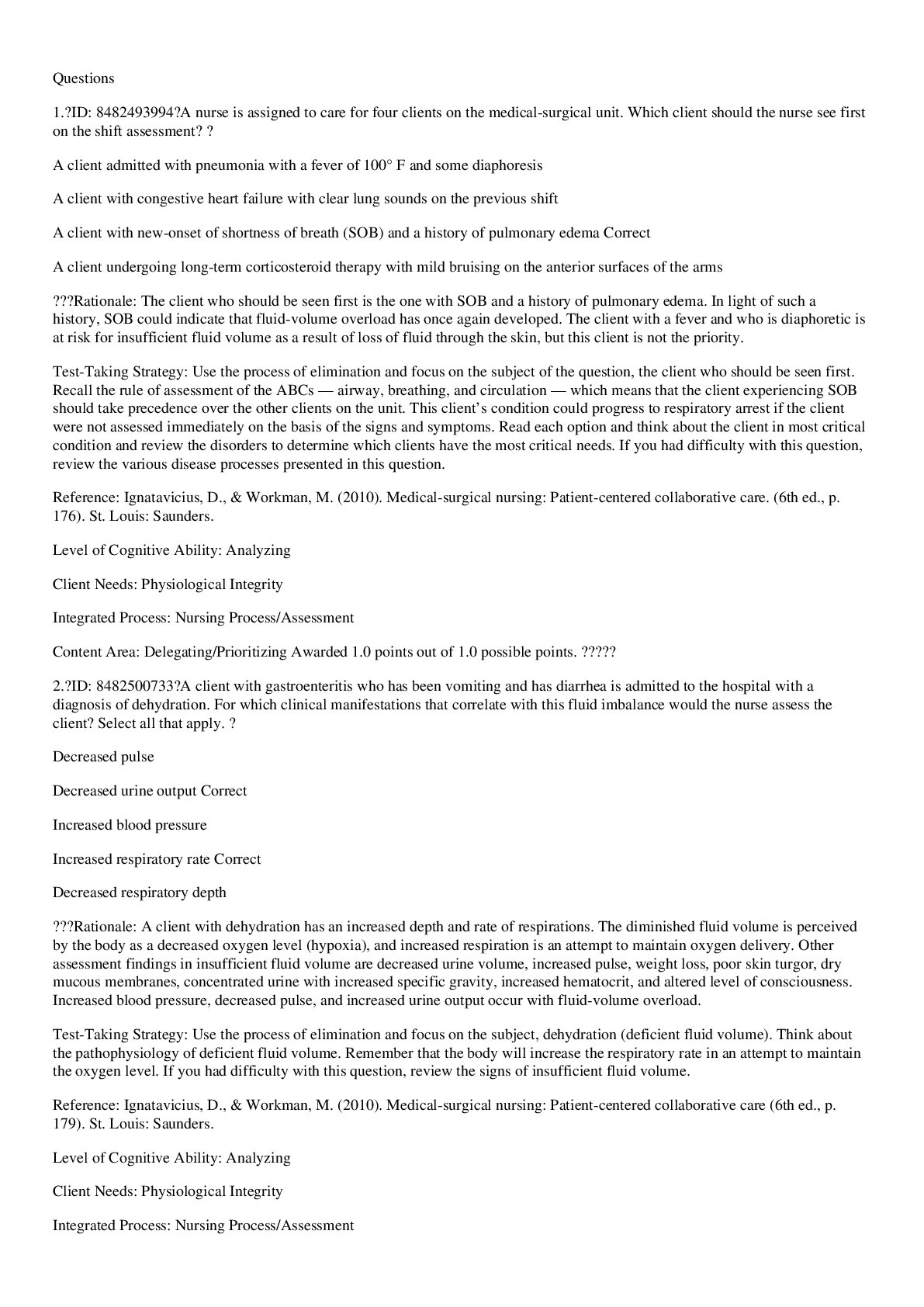
Also available in bundle (1)

COMPLETE HESI EXIT EXAM MODULES/EXAMS STUDY PACKAGE. ALL WITH RATIONALE. TOP RATED. DOWNLOAD TO SCORE A
COMPLETE HESI EXIT EXAM MODULES/EXAMS STUDY PACKAGE. ALL WITH RATIONALE. TOP RATED. DOWNLOAD TO SCORE A
By Quality Suppliers 3 years ago
$150
15
Reviews( 0 )
Document information
Connected school, study & course
About the document
Uploaded On
Feb 08, 2021
Number of pages
11
Written in
Additional information
This document has been written for:
Uploaded
Feb 08, 2021
Downloads
0
Views
73

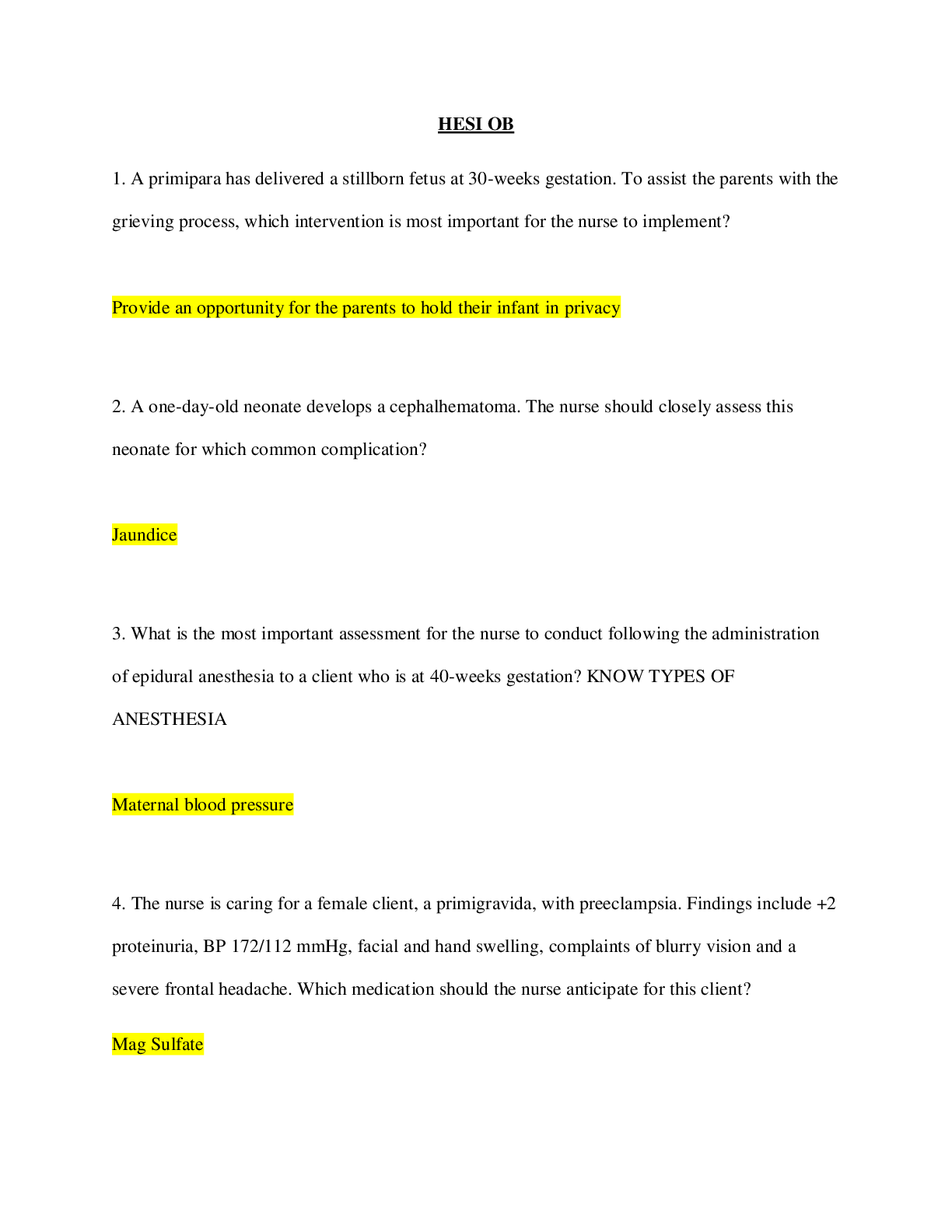
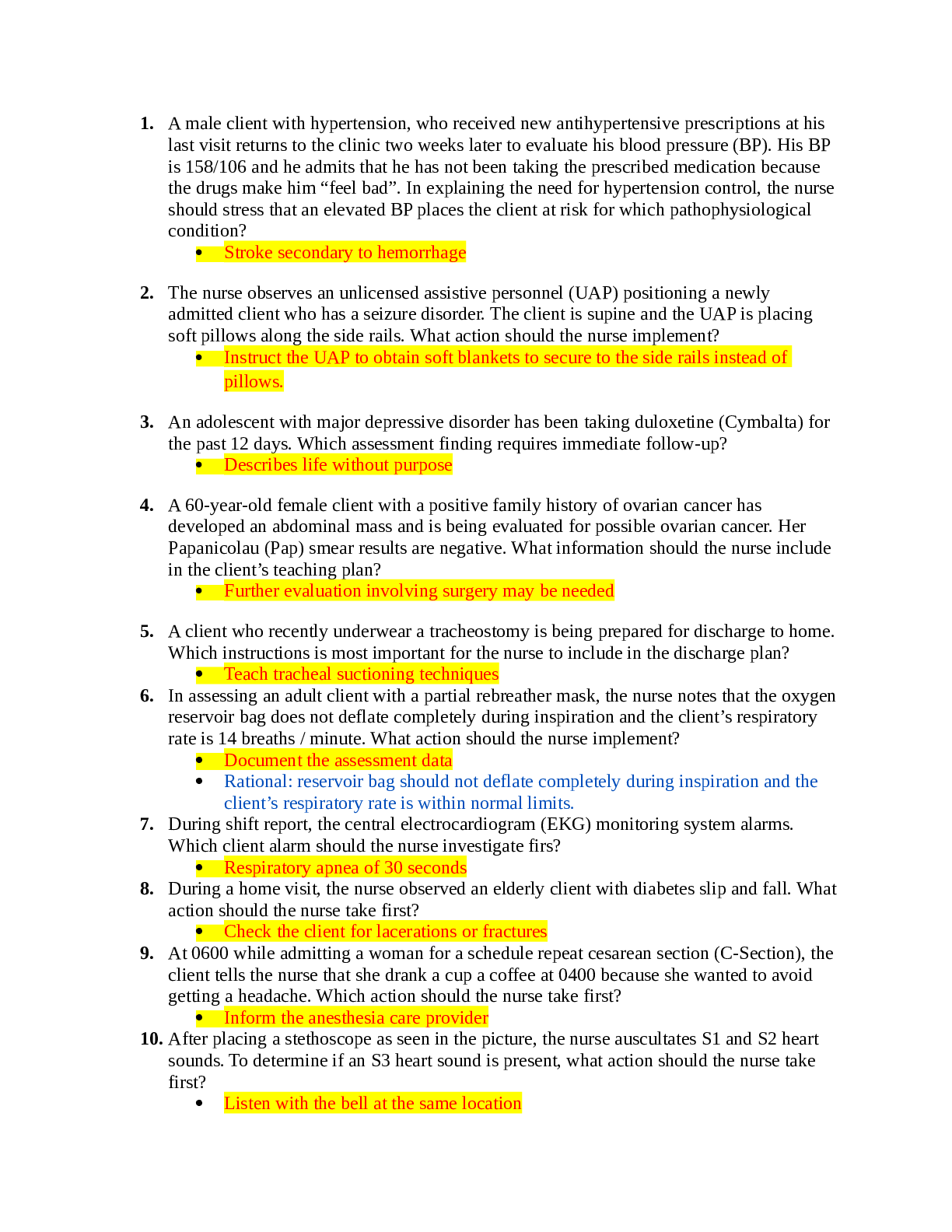



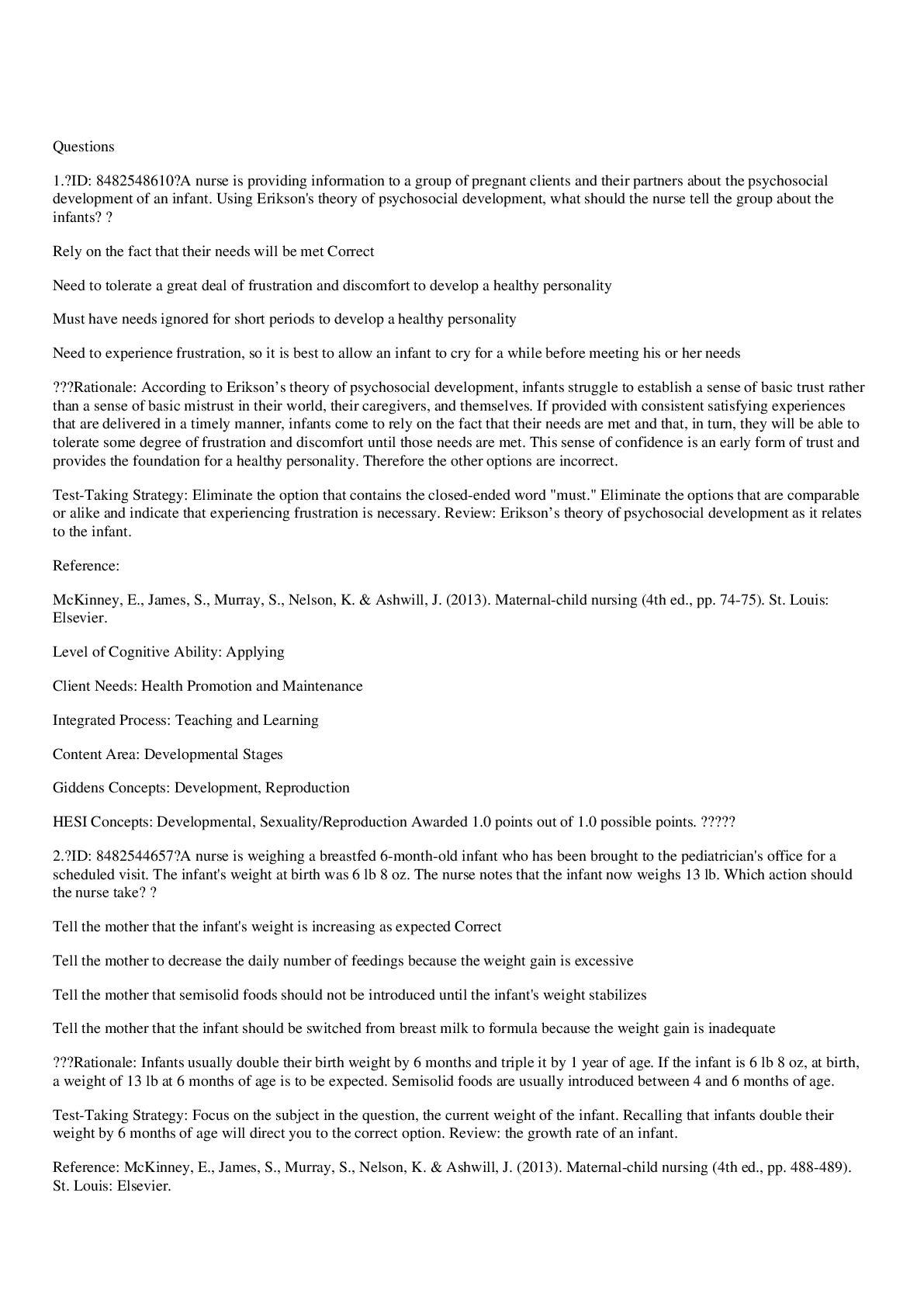
.png)




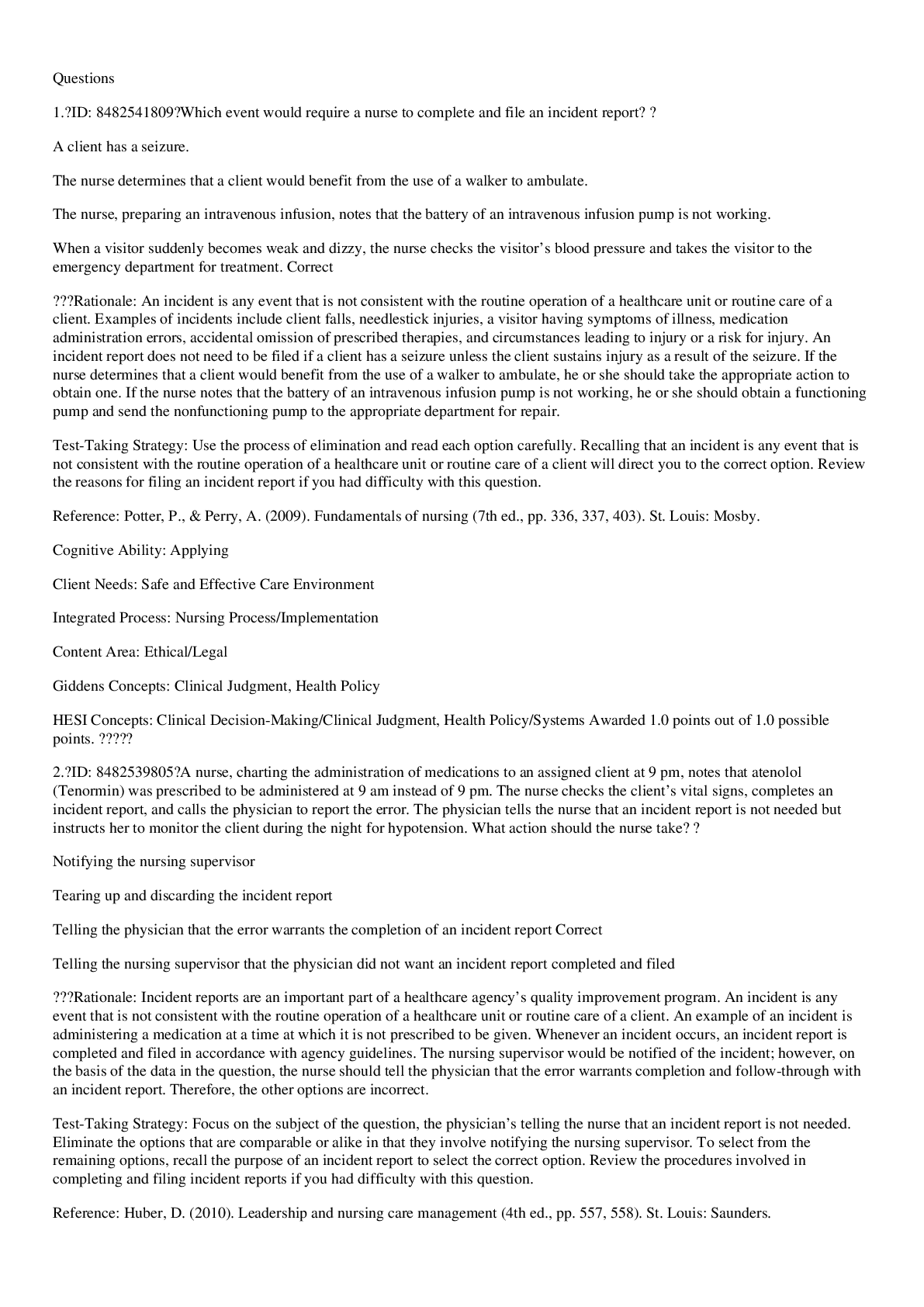

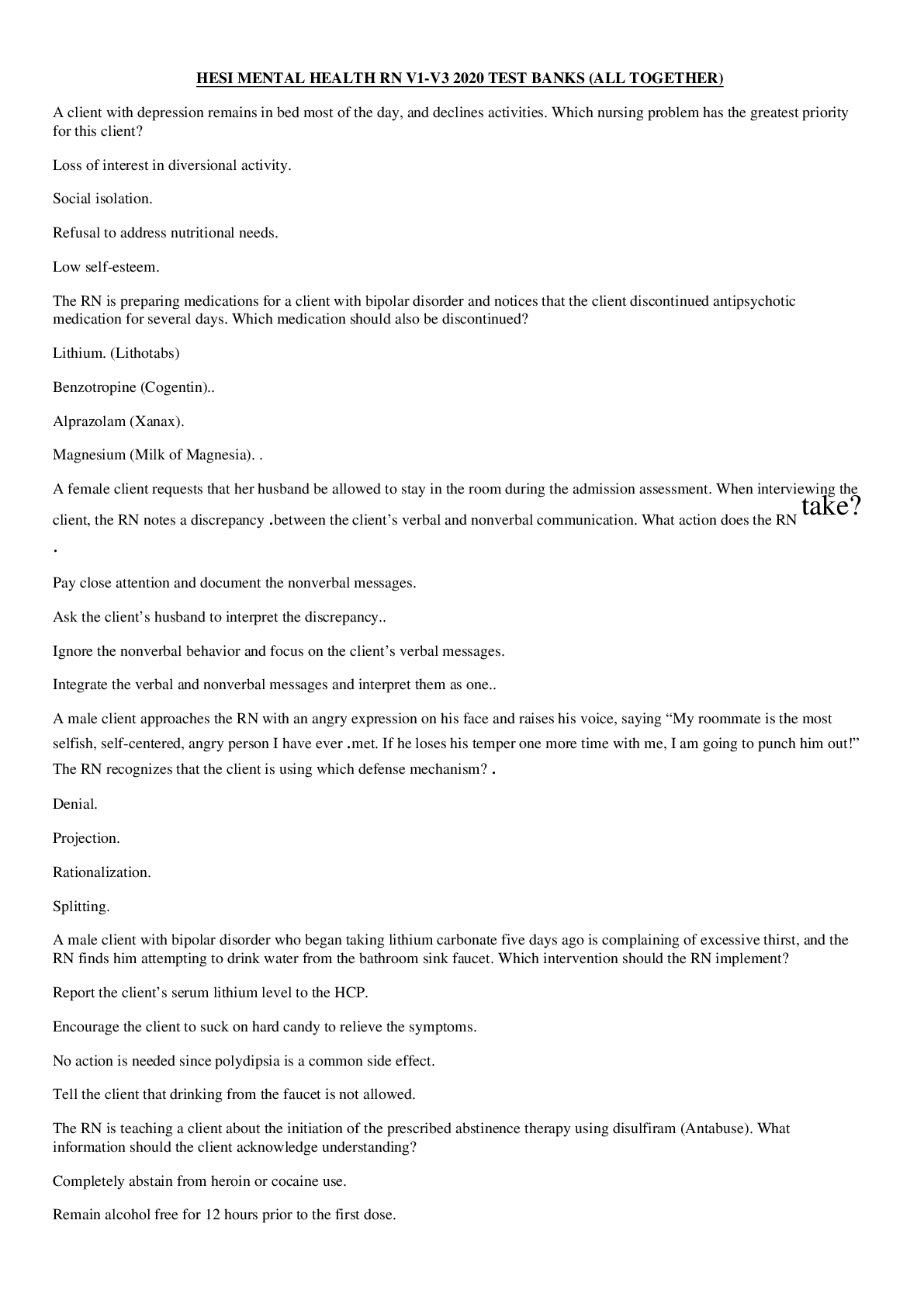





 (1).png)



